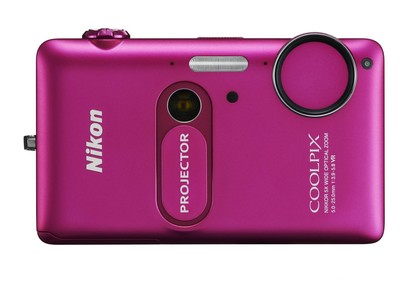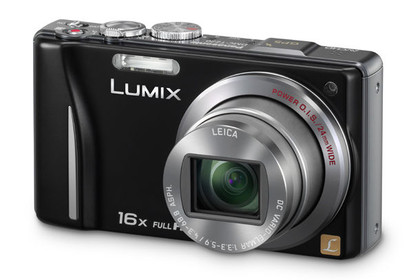Smartphone-smashing cameras
How gimmick laden compacts are taking on smartphones

Times are hard for the makers and marketers of compact cameras. Squeezed from below by the smartphone, and from above by an ever-increasing range of tempting mirrorless cameras and DSLRs, last week's announcement from analysts GfK that compact camera sales plunged 30% in 2011 was shocking - but not necessarily surprising.
The collapse in compact camera sales is easy to understand. The smartphone in your pocket might not appeal to a serious photographer, but for the snapper in the pub, the concert-goer or the tourist, nothing beats the convenience factor.
Always there, always on, and they're not being used for photography, phones such as the iPhone 4S or Samsung Galaxy S II can do plenty of other useful tricks. Even professional photographers are recommending them. Annie Leibowitz, Vanity Fair's go-to photographer, told MSNBC that the iPhone is the camera she recommends. "It's the snapshot camera of today," she said. "It's the wallet with the family pictures in it."
Compact makers aren't taking the onslaught lying down, though. Armed with the belief there's life in the old dog yet, the modern compact camera is positively stuffed with space-age tech which - manufacturers hope - will persuade you to take both a camera and a phone with you into the shower for the foreseeable future. Which tantalising tech is likely to win your hard-earned cash?
Cameras with projectors

As left-field tech goes there's not much to beat this. Instead of huddling friends around your camera, simply pop it on a level surface, fire up the integrated projector and shoot your pictures at the nearest vertical surface.
Nikon led the pack when it launched the S1000pj in the summer of 2009; its latest version, the S1200pj marries a 14.1mp sensor to a 20 lumen LED, allowing you to cast an image up to 60in diagonally on the wall.
Astonishingly it actually works, although it reduces the life-span of the camera's battery to around 60 minutes.
Sign up for breaking news, reviews, opinion, top tech deals, and more.
Also seen in
The 3M Shoot n' Share CP40 is a handheld HD camcorder along the lines of the now defunct Flip range, and also has a projector built-in. Sony's thrown its hat into the ring too, with the HDR-PJ10, whose projector, impressively, is built into the fold-out LCD monitor.
Does your phone do it?
Almost certainly not, although there are a few handsets around that build in pico projectors. Those desperate for a conversation-starting blower can try the Samsung Beam i8520.
Cameras with built-in GPS

Geo-tagging is one of photography's corollary hobbies that never quite seems to take off, but camera-makers are building cameras with GPS chips built-in nonetheless. The Panasonic Lumix TZ20 is one rather handsome example, adding GPS to your photos' metadata wherever it can.
Also seen in
Other than the Panasonic, geo-tagging cameras a ten-a-penny. Adventurous (or simply accident-prone) photographers should investigate the ruggedised Nikon AW100
Does your phone do it?
Almost certainly. Not only that, but since your phone can also locate itself using cell tower or WiFi triangulation it's probably a more reliable - and faster - judge of location.
Cameras with built-in Photoshop

Image processing is a pain, but for many shots it's a necessary evil. Enter the Olympus VR-340, announced just last week. Packing not only a 10x zoom and a 16mp sensor, the VR-340's totes a Beauty and Makeup Mode as well.
The latter feature promises (it's so new we've not even seen one yet) to not only apply obvious effects such as red-eye reduction, reducing harsh shadows and teeth whitening. Par for the course, perhaps, but it's a rare camera than also offers to "add eyeshadow" or the faintly surgical-sounding "lift cheekbones". The jury's out on whether it will actually make your subject look more attractive or simply like the victim of a ham-fisted plastic surgeon - watch out for TechRadar's review.
Also seen in
Virtually all cameras offer red-eye reduction, but more advanced beauty features are harder to come by. Some of Casio's Exilim range offer it.
Does your phone do it?
Probably not by default, but the thing about smartphones - particularly Android or Apple phones - is that they offer clever software writers a powerful programming platform, so it's always possible that if your phone doesn't do something now, it can be made to do it in the future.
Cameras with built-in WiFi

Now this is one that makes a lot of sense. Plugging your camera into your computer means finding the cable, which you've probably lost, and finding a spare USB port, which on many laptops you won't have.
Cameras such as the just-announced Samsung WB150 allow you to send photos straight from the camera to a cloud storage service, or sites such as Flickr or Facebook. It will also backup its memory card to your PC, using Wake-On LAN to start your computer if it's turned off. The WB150 also spits in the face of the smartphone crowd by offering an 18x zoom - let's see a smartphone with one of those strapped to the front.
Also seen in
WiFi cameras are surprisingly uncommon given the low cost of the hardware and near-ubiquity of WiFi networks. Still, if your camera doesn't have it, you can always add an Eye-Fi card, which ingeniously adds WiFi to virtually any compact via an SD card.
Does your phone do it?
Well, yes. Not only will your smartphone connect a wireless network, but it can surf the web as well.
Cameras with built-in phones

And lo, a singularity was created in which phones could take pictures and cameras could make phone calls. One of the big remaining advantages of a proper compact camera is that you get a decent zoom lens; most iPhone 4 owners would be reluctant to have the smooth lines of their superphone ruined by a mechanical zoom.
Polaroid is betting people won't care though, and the SC1630 Smart Camera is perhaps the weirdest beast here. From the front it's a camera, with a 3x optical zoom in front of a 16mp CCD sensor. Flip it over, though, and there's a 3.2in touchscreen display running the Android OS more frequently found on smartphones.
A 3G radio to transmit data over a cellular network is optional, and WiFi and Bluetooth come as standard. Polaroid also claims that the phone will support the Android Market, so you can potter about on Angry Birds while you're waiting for something to photograph. Time - and full reviews - will tell whether this is an inspired hybrid or a tired mishmash.
Also seen in
A single anonymous source told Gdgt in March 2011 that Sony was working on a "cloud camera" that would have 3G. Given that we've heard nothing since - and that Sony itself smacked the rumours down five days after the original report - it seems that Polaroid is likely to have the only 3G-capable-camera-in-the-village for the foreseeable future.
Does your phone do it?
Of course it does. Not only does your phone already have 3G plus GSM (or CDMA) voice-calling abilities, and you already pay for it. If your camera offered 3G it would be yet another device for you to pay a subscription on.
Dave is a professional photographer whose work has appeared everywhere from National Geographic to the Guardian. Along the way he’s been commissioned to shoot zoo animals, luxury tech, the occasional car, countless headshots and the Northern Lights. As a videographer he’s filmed gorillas, talking heads, corporate events and the occasional penguin. He loves a good gadget but his favourite bit of kit (at the moment) is a Canon EOS T80 35mm film camera he picked up on eBay for £18.